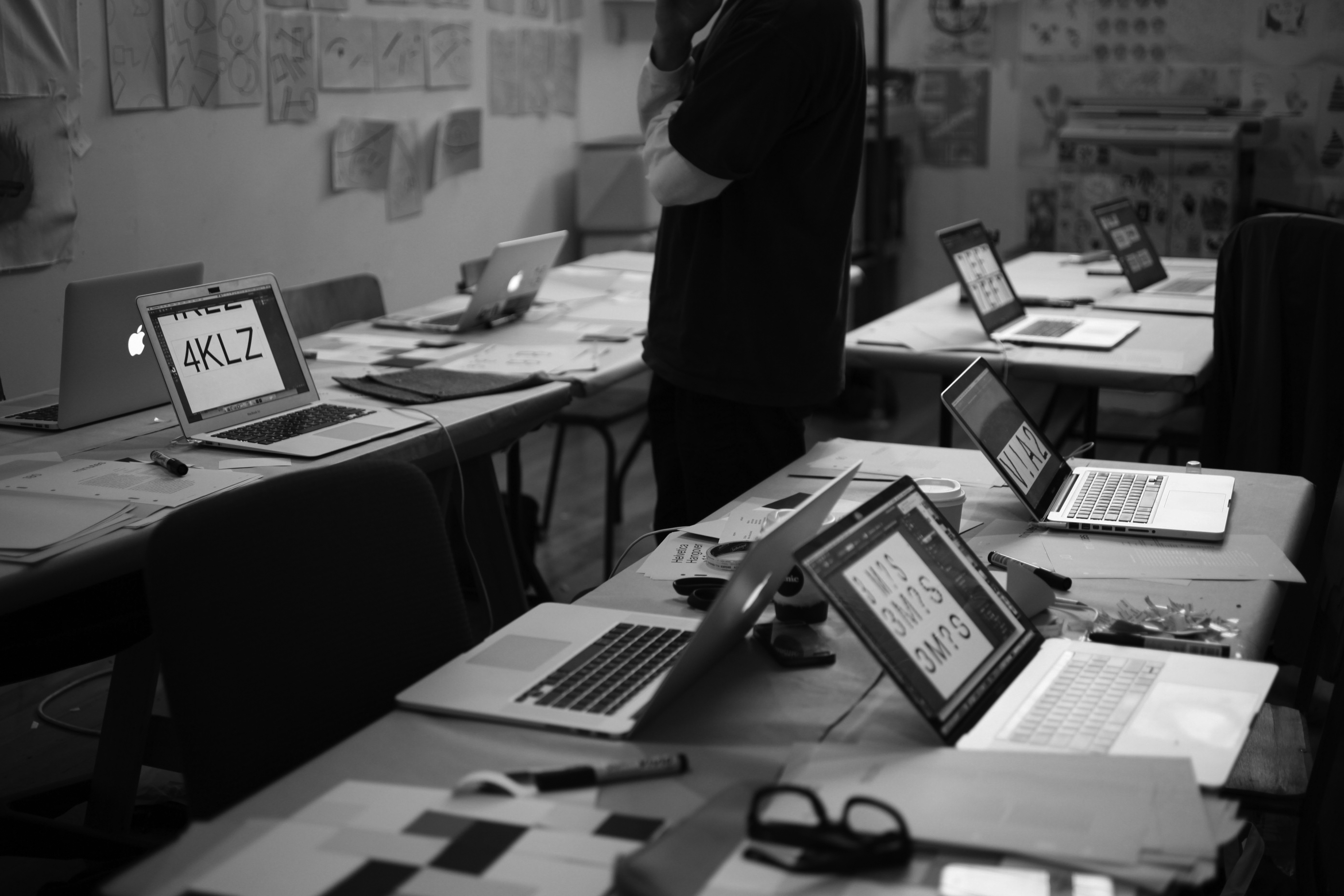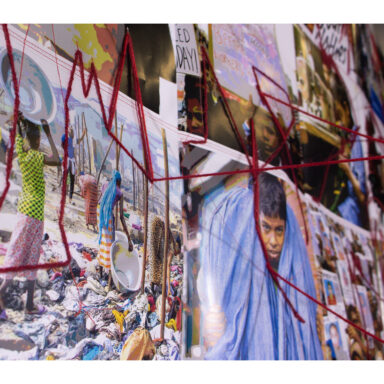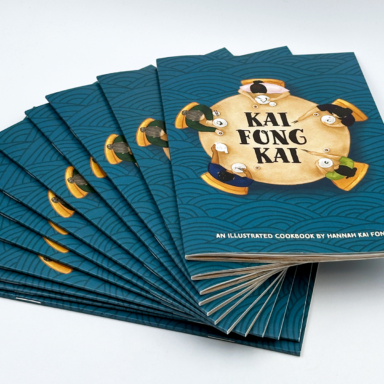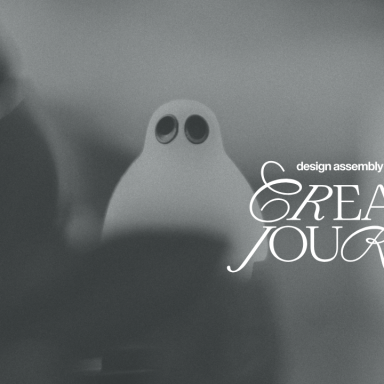An exploration of graphic design education – an interview with office-party
Written by Cameron Ralston
Supported by Creative New Zealand

Cameron Ralston discusses graphic design workshops and moving from education to workforce with Bryn Fenemor and Caitlin Rassie through their project office-party.
Cameron Ralston:
Let’s begin by talking about how office-party came about. In the office-party introduction you write about a shift or divide between academic and educational graphic design and the graphic design industry. This is something that I’ve heard about a lot. How has this transition been for both of you? Certainly different design educations are geared in different ways, i.e. skill based, technical, critical and academic, which will create various levels of disconnect. I’m curious what divides you have found in relation to your specific educations? Furthermore how do you think the divide can be bridged? How do you see the workshop format existing or providing new insight within the gap you talk about?
office-party:
Well, we both gained qualifications within different degree frameworks, one a Bachelor of Design and the other a Bachelor of Fine Arts. So generally speaking, we were exposed to a more critical / academic approach than say a diploma model would provide, especially in latter years. However, office-party stems not so much from comparing and contrasting the structure of Whitecliffe and Massey, as from an interest in revisiting the student mindset. Particularly, how the classroom fosters an open forum; leaving room for broad discussion alongside mentorship, you are opened up to a range of perspectives and ideologies as you work. That space is unique in that it teaches you being uncertain isn’t necessarily a vulnerability. There is a level of naivety, a questioning that is expected and encouraged.
Following graduation there is a sense that education stops and the ‘real’ world starts. In business, certainty and efficiency are markers of success, so questioning can be perceived as a luxury, something self-indulgent. Each studio has its own agenda, which you tune in to over time. The difficulty arises when there is a disconnect between value systems. We have both found ourselves in a position where we are answering more to politics than reason at times — when that begins to hinder your own development, it becomes damaging. Especially if you are investing a lot of yourself into your work.
Acknowledging that your working environment isn’t able to support you in this sense can be liberating. Then the challenge becomes, how can I maintain a more academic level of inquiry alongside this? What alternatives exist to the rigid educational framework of a Bachelor or Masters programme, how else may we cultivate an environment for learning? That is where our interest in the workshop format stems from. What makes that a successful context for education, and how may we judge that success? In a way, office-party is an experiment that attempts to address these questions.
CR:
I’m interested to know if you have any examples of studios that you think are able to strike a good balance between productive work, experimenting and learning. Do you have any specific New Zealand examples?
OP:
We see many groups and individuals striking this balance internationally. James Goggin would be one example, and we were fortunate enough to hear him give a guest lecture at Whitecliffe recently. James has relatives in Hamilton so at a stretch we could also claim his as a New Zealand example… Regardless, his use of the dichotomy of ‘practice’ / ‘practise’ to contextualise his approach particularly resonates. As his studio name, ’practise’ serves as a modus operandi. He operates in the capacity of both educator and practising designer, seeing no need to draw a distinction between these avenues. Everything that he pursues relates back to design in a broad sense. Whether that be developing and presenting ideas (design as performance), investigating different approaches to work (design as studio model), or outputting final artwork with crop-marks and bleed (design as a practical skill set).
His framing of the ’studio’ as an ever-evolving set of circumstances within which to experiment is quite a liberating thought. For example, James now gives lectures on Pop Culture Colour Theory at RISD, yet his inquiry into colour commenced during his studies, with the ‘Passport Colour Photo Test’ project. This series of experiments in colour reproduction continues to this day, though he says it is getting harder and harder to find a passport photo booth…
Locally, we would say we are inspired by the approach of individuals / studios such as Index (Amy Yalland and Jonty Valentine), Narrow Gauge (Layla Tweedie-Cullen), Studio Catherine Griffiths, and DDMMYY (Kelvin Soh). They all embody the idea of publishing as artistic practice, and evidence a sustained interest in education, some maintaining ties to academia in the form of lecturing. This in turn influences their studio work, adding a depth that is perhaps missing from purely commercial studios. It is interesting to us to hear how these practitioners describe what they do; Kelvin Soh provides an interesting analogy for his studio model, in that it functions somewhat like a band. A range of members with divergent interests, each contributing their perspective to strengthen a project. There is an equal footing, but like all bands, there is the need for a front man, someone to lead.
CR:
You write, office-party is about ‘opening up the space to pursue work that is unashamedly personal. Represent yourself.’ Personal growth and finding ways to create some energy around graphic design that isn’t necessarily client, or solution, based seems to be a focus. This aligns somewhat with what Catherine Griffiths worked with in her TYP GR PH C workshops. You both participated in these; did her work provide influence for office-party?
OP:
We openly acknowledge Catherine’s TYP GR PH C series as an influence, which has evidenced that there is appetite for this type of project. Catherine’s overall practice influences us on a more general level also — we are enamoured with the breath of her work as a designer. From literary / spatial projects such as the writers walk in Wellington and public park commissions, to collaborating personally with the late Sir Ian Athfield, she seamlessly navigates disciplines and advocates (in a more oblique sense than a commercial initiative such as ’Better by Design’) for design to have a seat at the table.
In his text ‘Research and Destroy; A Plea for Design as Research’ Daniel van der Velden argues that operating beyond the typical commission / design response model was integral to the success of influential modernist designers such as Piet Zwart, Herbert Bayer, Paul Rand, Wim Crouwel and Massimo Vignelli. We see this in how Catherine conducts herself, and it has helped in terms of giving ourselves the permission to pursue office-party. We want to build on the sense of community that TYP GR PH C has offered us, to initiate a dialogue that involves voices beyond our own.
Having said that, office-party is not simply TYP GR PH C with a different name. Catherine has an established practice and reputation, so an element of mentorship comes with the territory. At TYP GR PH C there is decisiveness in the form of critique and guidance, a gesturing towards where each response could go. This helps to maintain momentum throughout the day, and each participant gleans a little insight into Catherine’s approach. Any apprehension that we have felt to the workshop format has stemmed from this idea; that we should be some sort of guiding voice. In establishing a direction for office-party, that was a framing we wanted to avoid. The workshops are geared towards younger designers that are in the process of navigating academic and industry discourse, just as we are. So the challenge became one of creating distance; how might we remove our own predisposition from the equation? How can we foster an environment for contributing / sharing / reflecting equally?
CR:
In each workshop you begin with revisiting assignments from Nina Paim’s Taking a Line for a Walk compendium. Could you talk a little about the assignments? What connects these formats to the ideas you want to explore? You had your first workshop on the 15th of July in Auckland, what have you gained from this? Do you have plans for a follow-up?
OP:
Containing over 200 historical assignments, Taking a Line for a Walk is a significant resource of design pedagogy. Each assignment brings with it a context; a set of instructions to interpret, respond to, reflect upon. When we speak of creating distance, this idea of revisiting, as opposed to authoring, has proven particularly useful.
The first workshop was a litmus test of sorts, to gauge interest and test out a run-sheet for the day. Eight participants, some familiar faces and some new, and a healthy amount of discussion around experiences of employment / education — which was quite organic. Generally, we’ve had positive feedback on the day. We moved quickly, completing four historical assignments before moving on to one of our own devising for the afternoon. This time around we allocated each assignment a set time, but moving forward we feel there is a balance to strike between maintaining structure for the day and allowing the responses to develop organically alongside conversation. We were also dealing with simultaneously facilitating the workshop and taking part.
In that sense the project is also for us, so we feel a heightened sensitivity to what is / isn’t successful. We’re our own biggest critics… The main learning would be that we need to build in more time for reflection, for the peripheral thoughts to emerge; is the assignment successful? If so, why? What was your intention with the response? How could you develop it further? We are also interested in unravelling the context behind each assignment in more detail. Each is a vantage point from which to explore a particular moment in design history — what does this reveal of the practitioner, the institution, the design philosophy at play?
We do have plans for another Auckland based workshop, which will address some of the above learnings. We are also interested in the idea of a more frequent reading group as a way to extend the office-party project. More soon.
This conversation has prompted us to reflect, in a more deliberate sense, on how we see office-party progressing. We have come upon some ideas that we will take forward. Thanks for initiating it, Cameron!








